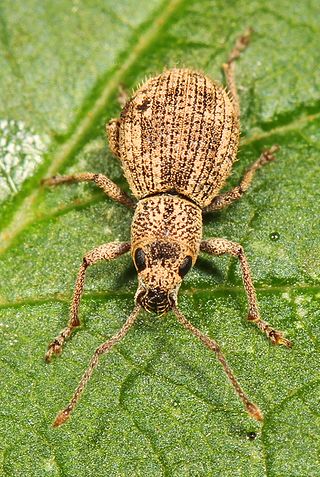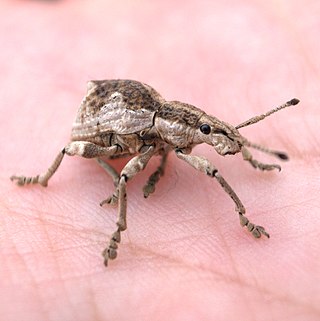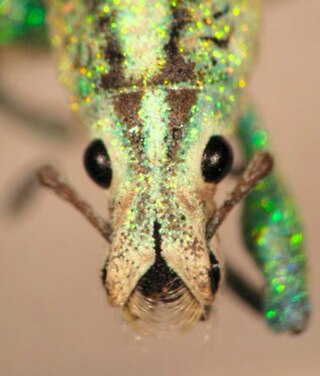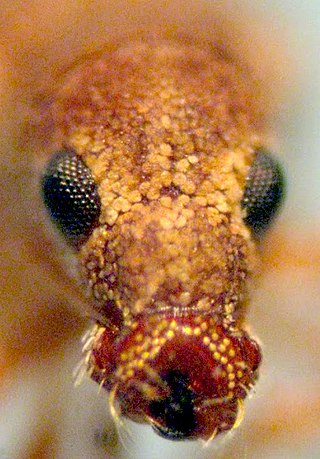
Cyphicerini is a tribe of oriental broad-nosed weevils in the subfamily of beetles known as Entiminae.
Tanymecini is a tribe of broad-nosed weevils in the beetle family Curculionidae, subfamily Entiminae.
Astycus cinereus, is a species of weevil found in Sri Lanka.
Astycus immunis, is a species of weevil found in Sri Lanka.

Dereodus is a genus of beetles belonging to the family Curculionidae. Species are distributed throughout India, Sri Lanka, Middle East, Africa and introduced to Australia.

Episomus is a genus of beetles belonging to the family Curculionidae. Species are distributed throughout Sri Lanka, India, Myanmar, Thailand, Malay Peninsula, Sumatra, Java, Borneo, Philippines, China and Japan, Pacific Northwest of America. Many species are considered economically important, as they are pests of field beans, cotton and pigeon pea.

Oxyderces is a genus of broad-nosed weevils in the family Curculionidae distributed in South America. It can be recognized by the presence of dense setae on the apex of the rostrum and postocular setae.

Anypotactus is a genus of broad-nosed weevils in the beetle family Curculionidae, subfamily Entiminae, tribe Anypotactini, present across Central and South America. There are six described species in Anypotactus.

Aclees is genus of fig weevil. Aclees taiwanensis has become an invasive species in many countries in Southern Europe, found in France in 1997 and again in Italy in 2005, where it threatens orchards and wild plants.





